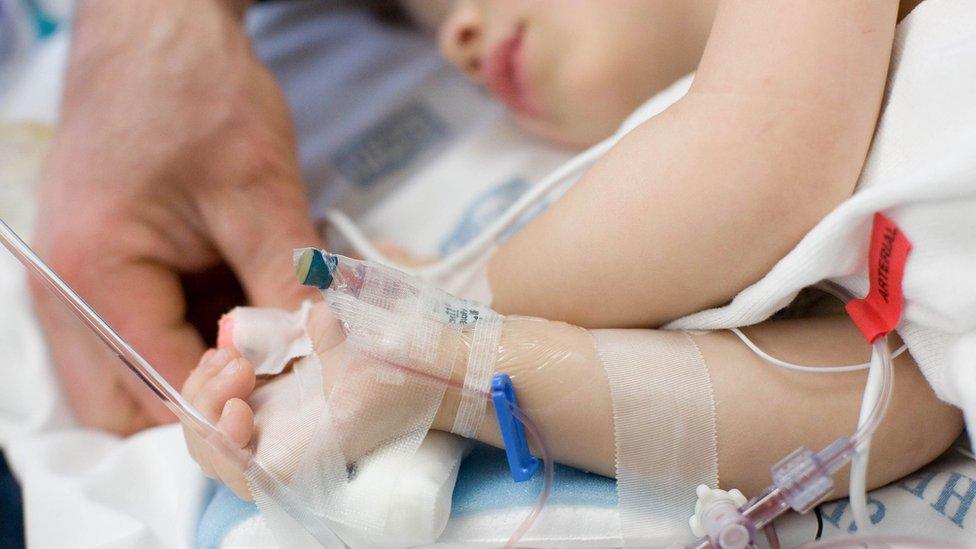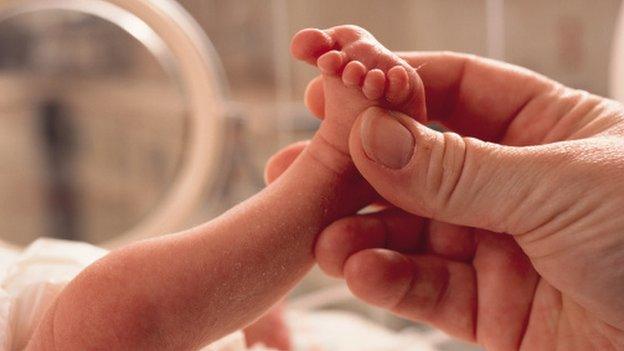Child death rates on the rise in England
- Published

There were 3,743 deaths in children in the year ending March 2023 - up from 3,452 the previous year, estimates for England suggest.
The National Child Mortality Database, external shows deaths were highest for children of black or black British ethnicity, and those living in the poorest areas.
The Royal College of Paediatrics and Child Health (RCPCH) said the statistics were "devastating".
It said rising child poverty was a major concern.
The figures suggest the steepest rise in deaths was for children under five. Researchers are doing more work to understand the factors behind this.
The RCPCH president, Dr Camilla Kingdon, said: "Figures such as these in a nation as rich as ours are unforgivable.
"Reducing child poverty must finally become a national priority...This has to be a wake-up call for us all and I urge our political leaders to action."
The National Child Mortality Database (NCMD) includes data from reviews of all children who die at any time after birth and before their 18th birthday. The database started in 2019.
For 2023, it estimates:
the child death rate went up from 29.3 to 31.8 per 100,000 children
the death rates in the poorest areas were more than twice as high as in the richest
for children of black or black British ethnicity, the death rate stood at 56.6 per 100,000
for children of Asian or Asian British ethnicity, the figure was 50.8
it was much less for children of white ethnicity, at 25.5
While death rates continued to rise for children of black and black British ethnicities, the death rate for children of white ethnicity was similar to the previous year.
For infants (under one year of age) the report shows:
the death rate increased from 3.6 per 1,000 live births in 2022 to 3.8 in 2023
the death rate for the poorest went up from 5.4 per 1,000 infant population in 2022 to 5.9 in 2023
this was more than twice that of infants in least deprived neighbourhoods
the infant death rate was highest for infants of black or black British ethnicity (8.7 per 1,000 live births), approximately three times the rate of infants of white ethnicity
the death rate for infants of Asian or Asian British ethnicity was 6.2 per 1,000 live births
The data suggests while infant death rates for those of black and Asian ethnicity increased in comparison to the previous year, the death rates for infants of white ethnicity stayed fairly steady.
The director of the NCMD and professor of neonatal medicine at the University of Bristol, Prof Karen Luyt, said infant mortality was a standard by which countries judge the state of their healthcare, and in most high-income countries the figures were improving - unlike England.
She said there were many different factors behind England's figures, but increasing deprivation since the pandemic was one of the main reasons.
Prof Luyt added: "Most infant deaths are due to prematurity and we known people who live in social deprivation are at higher risks of premature births.
"There is also evidence that women from ethnic minorities do not always feel as welcome in the health service, and capacity and resources in healthcare services are also constrained."
A government spokesperson said: "There are 1.7 million fewer people in absolute poverty than in 2010, including 400,000 children, and we are providing a record support package worth £3,300 per household on average.
"From October 2022, local maternity and neonatal systems began to publish equity and equality action plans to tackle disparities experienced by women and babies from ethnic minorities and those living in the most deprived areas."
Related topics
- Published2 May 2014

- Published5 September 2014
